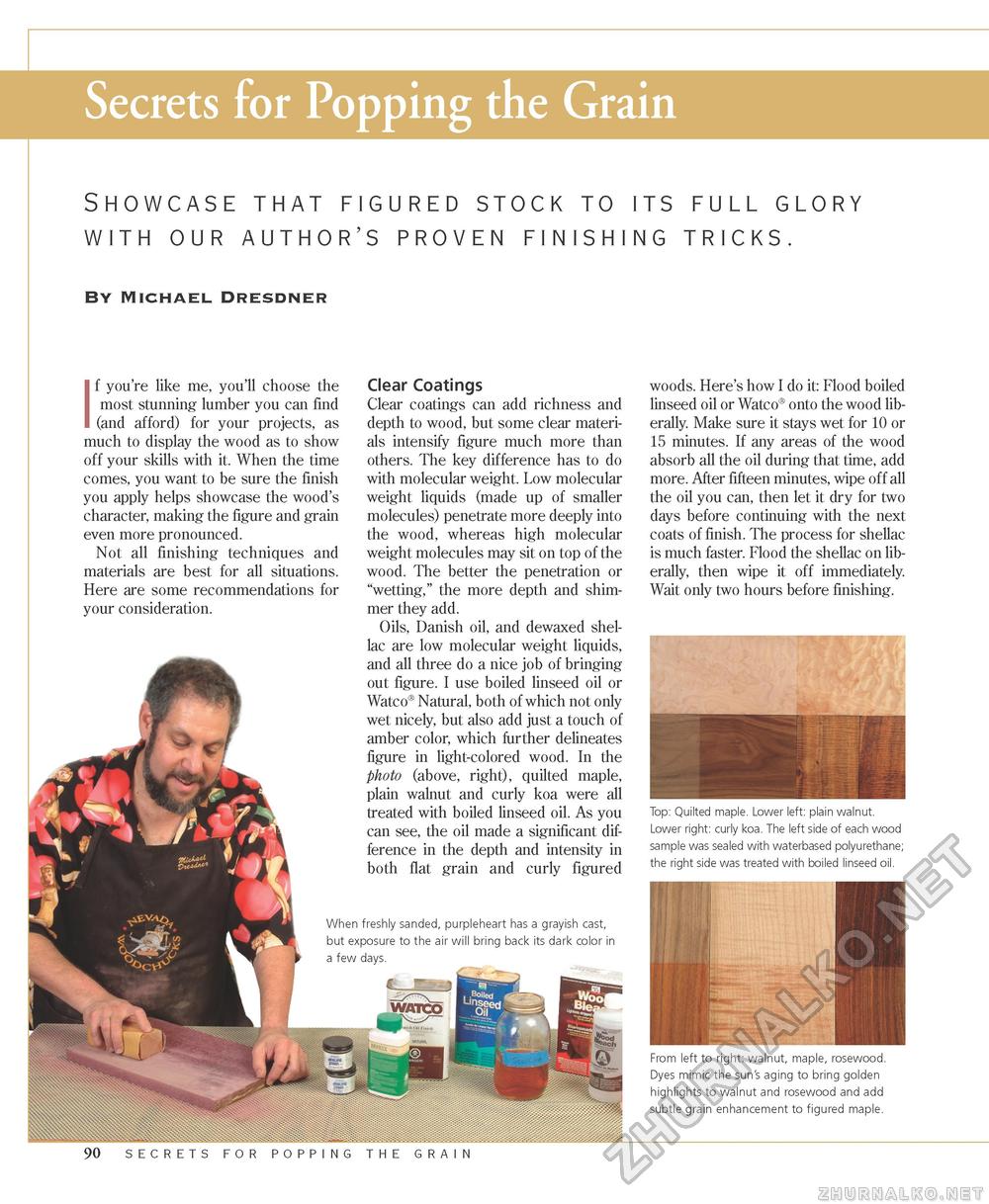Woodworker's Journal Summer-2008, страница 90
Secrets for Popping the Grain Showcase that figured stock to its full glory with our author's proven finishing tricks. By Michael Dresdner If you're like me, you'll choose the most stunning lumber you can find (and afford) for your projects, as much to display the wood as to show off your skills with it. When the time comes, you want to be sure the finish you apply helps showcase the wood's character, making the figure and grain even more pronounced. Not all finishing techniques and materials are best for all situations. Here are some recommendations for your consideration. Clear Coatings Clear coatings can add richness and depth to wood, but some clear materials intensify figure much more than others. The key difference has to do with molecular weight. Low molecular weight liquids (made up of smaller molecules) penetrate more deeply into the wood, whereas high molecular weight molecules may sit on top of the wood. The better the penetration or "wetting," the more depth and shimmer they add. Oils, Danish oil, and dewaxed shellac are low molecular weight liquids, and all three do a nice job of bringing out figure. I use boiled linseed oil or Watco® Natural, both of which not only wet nicely, but also add just a touch of amber color, which further delineates figure in light-colored wood. In the photo (above, right), quilted maple, plain walnut and curly koa were all treated with boiled linseed oil. As you can see, the oil made a significant difference in the depth and intensity in both flat grain and curly figured When freshly sanded, purpleheart has a grayish cast, but exposure to the air will bring back its dark color in a few days. woods. Here's how I do it: Flood boiled linseed oil or Watco® onto the wood liberally. Make sure it stays wet for 10 or 15 minutes. If any areas of the wood absorb all the oil during that time, add more. After fifteen minutes, wipe off all the oil you can, then let it dry for two days before continuing with the next coats of finish. The process for shellac is much faster. Flood the shellac on liberally, then wipe it off immediately. Wait only two hours before finishing. Top: Quilted maple. Lower left: plain walnut. Lower right: curly koa. The left side of each wood sample was sealed with waterbased polyurethane; the right side was treated with boiled linseed oil. From left to right: walnut, maple, rosewood. Dyes mimic the sun's aging to bring golden highlights to walnut and rosewood and add subtle grain enhancement to figured maple. 90 secrets for popping the grain |








